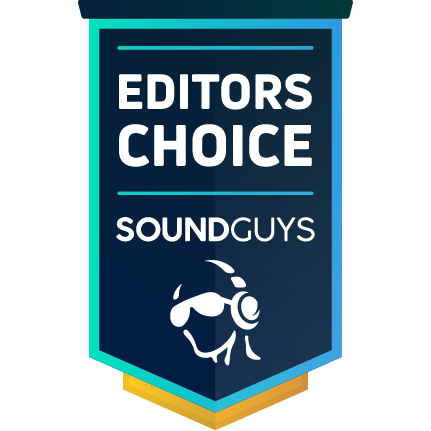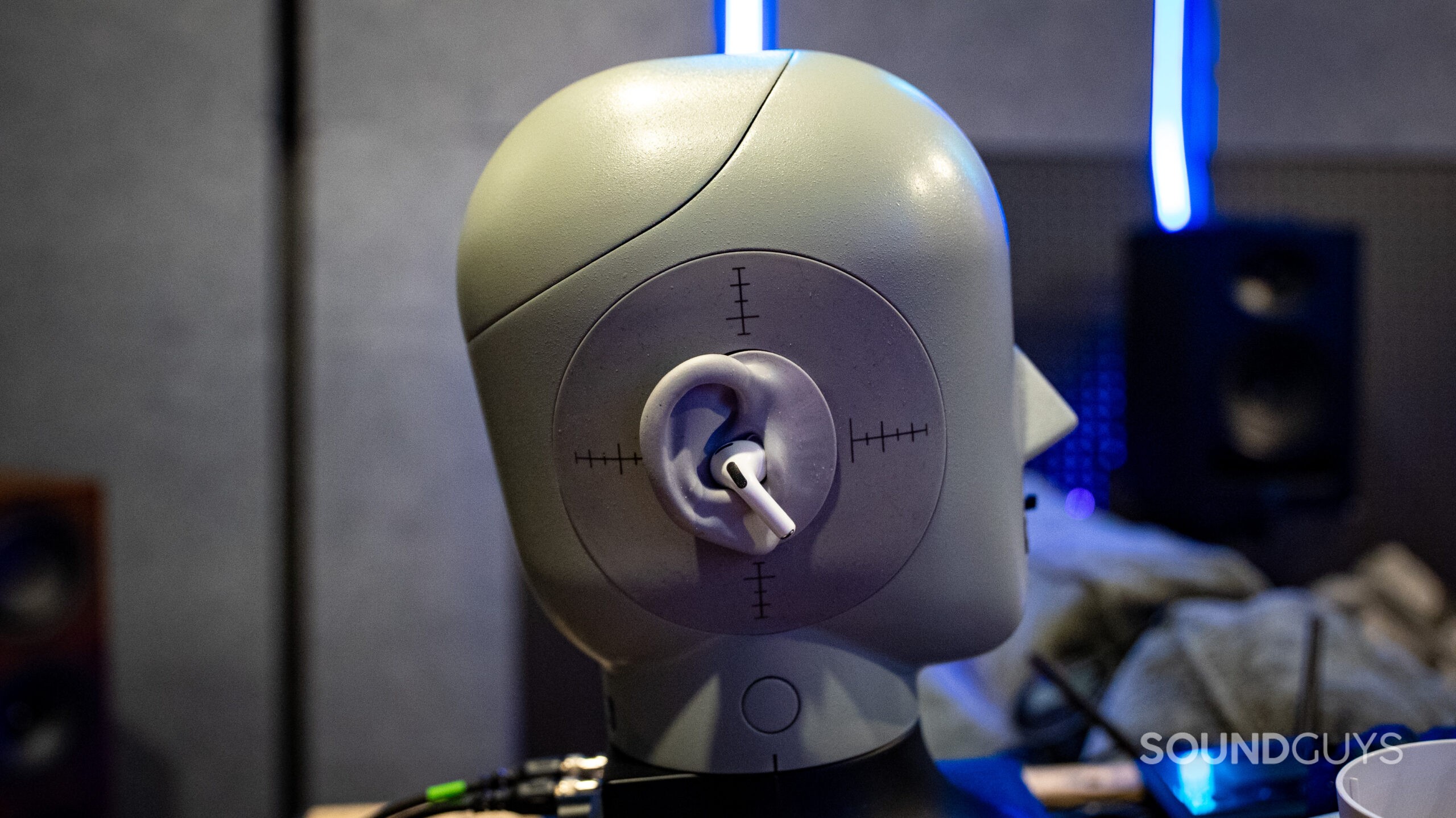All products featured are independently chosen by us. However, SoundGuys may receive a commission on orders placed through its retail links. See our ethics statement.
The AirPods Pro 3 are great, but these 6 earbuds are smarter buys
November 4, 2025
The Apple AirPods Pro 3 are easily among the best wireless earbuds in 2025. They’re packed with fast pairing, polished ANC, and exclusive features like Adaptive Audio and Hearing Aid Mode. But as great as they are, AirPods still aren’t the perfect fit for everyone—especially if you don’t use an iPhone, want better battery life, or simply don’t feel like paying Apple’s premium. Here are six earbuds that can beat the AirPods Pro 3 in value, versatility, or innovation, whether you’re after pure performance, health tracking, or a sub-$100 price tag.
The Quick Answer
For a quick guide to the best AirPods Pro 3 alternatives that suit your needs and budget, check out our top picks below. Each has a link to our full review.
Best overall: Nothing Ear (2024)
Best for iPhone: AirPods Pro 2
Best under $100: Anker Soundcore Liberty 4 NC
Best ANC: Bose QuietComfort Ultra (2nd Gen)
Best for heart-rate tracking: Beats Powerbeats Pro 2
Best for Live Translation: Samsung Galaxy Buds3 Pro
Best AirPods Pro 3 alternative for most people: Nothing Ear (2024)


If you want comparable performance for half the price, the Nothing Ear (2024) are the best alternative for most people. In our testing, the Nothing Ear impressed us with excellent sound quality, LDAC and LHDC support, and one of the most customizable EQ systems we’ve ever used. The companion Nothing X app lets you fine-tune the sound through a full parametric equalizer or take a personal hearing test to tailor the sound to your ears.
The Nothing Ear’s Timbre and Immersiveness scores are among the best we’ve measured, delivering clean midrange clarity and spacious stereo imaging. Bass depth can be adjusted via the “Bass Enhance” feature, which gives you control over how much punch you want in the low end. While the noise canceling isn’t as strong as Apple’s, the transparency mode sounds natural, and call quality is excellent.
Battery life is solid too, lasting 8 hours and 4 minutes on a single charge in our lab tests. Combine that with a lightweight, comfortable design and a transparent aesthetic, and you get earbuds that look and feel premium without the price tag.
Read our full Nothing Ear (2024) review
Best for iPhone: AirPods Pro 2

If you want almost everything the AirPods Pro 3 offer without the price tag, the AirPods Pro 2 are the value pick for iPhone users. You still get Apple’s tight ecosystem perks—Personalized Spatial Audio, Adaptive Audio, hearing aid functionality, and now even Live Translation with iOS 18—at a lower street price than the Pro 3. In my testing, ANC remains effective, sound quality aligns well with our preference curve, and auto-wear detection is still best-in-class.
There are trade-offs. Battery life lands around 5 hours and 43 minutes with ANC (the Pro 3 push to 8:42), the microphone isn’t quite as clean as the Pro 3, and there’s no native EQ (same limitation as the Pro 3). Also note: the Pro 2 do not have an onboard heart-rate sensor—that’s a Pro 3 perk—but if you already wear an Apple Watch, you won’t miss much.
Bottom line: for iPhone owners who care about strong noise canceling, natural transparency, and Apple-only conveniences without paying flagship prices, AirPods Pro 2 are the smart buy.
Read our full AirPods Pro 2 review
Best under $100: Anker Soundcore Liberty 4 NC


If you’re shopping under $100, the Soundcore Liberty 4 NC are the easy pick. In our testing, they combine strong ANC for the price, nearly 10 hours (9:53) of battery life with ANC on, and rare features like LDAC support and wireless charging. The Soundcore app is a standout: you get 22 presets plus an 8-band EQ, so you can dial in bass strength and treble strength instead of living with one default.
Out of the box, the tuning pushes bass and treble more than our preference curve, but I quickly corrected that with the EQ. Objective results back this up: the Liberty 4 NC post excellent MDAQS scores (Overall 4.9; Timbre 4.9, Immersiveness 4.8), which is remarkable at this price. ANC does the heavy lifting against traffic and transit noise; passive isolation isn’t as strong, so some chatter can sneak in. Comfort is decent for a couple of hours, the case is chunky but pocketable, and Bluetooth 5.3 with multipoint kept connections stable in my commute.
Bottom line: if you want big-brand features and customizable sound for a budget price, these deliver.
Read our full Anker Soundcore Liberty 4 NC review
Best ANC: Bose QuietComfort Ultra Earbuds (2nd Gen)

If you want the next-best noise canceling we’ve measured without locking into Apple, Bose’s QuietComfort Ultra Earbuds (2nd Gen) are the pick. In our tests, ANC knocked down about 85% of external noise, second only to AirPods Pro 3, and the transparency mode smartly tames sudden loud sounds. They’re comfortable for long flights, support Bluetooth 5.3 with multipoint, and play nice across platforms with SBC/AAC plus aptX Adaptive/Lossless via Snapdragon Sound on compatible Android phones. Wireless charging and IPX4 round out a very travel-friendly package.
Sound skews toward bass strength and elevated treble; many listeners will enjoy the energetic presentation, but the 3-band EQ is too limited if you want finer control. Objective results back up the overall quality: MDAQS Overall 4.8 (Timbre 4.9, Immersiveness 4.2). Battery life is the trade-off—our standardized test landed at 5 hours and 34 minutes per charge with ANC on—so plan on top-ups from the case.
Bottom line: if you prioritize class-leading ANC on iPhone or Android and want Snapdragon Sound as a bonus, these are the best cross-platform alternative to AirPods Pro 3.
Read our full Bose QuietComfort Ultra Earbuds (2nd Gen) review
Best fitness alternative (with heart-rate): Beats Powerbeats Pro 2


If you live in the gym, the Powerbeats Pro 2 are the best AirPods Pro 3 alternative for workouts. They use the same heart-rate sensor tech as AirPods Pro 3, so you can pipe real-time heart-rate to supported fitness apps/equipment while the secure ear-hook design keeps them locked in place through sprints and burpees. In my testing, ANC is strong for a fitness set (our lab measured ~83% external noise reduction), and transparency sounds natural enough for road runs. Apple’s H2 chip brings the usual iOS perks—instant pairing, device switching, Audio Sharing, Find My—and Android users still get a solid Beats app for setup.
Sound skews “workout-friendly” with elevated bass strength and treble; with ANC on the earbuds score well on our MDAQS panel (Overall 4.6; Timbre 4.8). Note that sound changes with ANC off, and there’s no true EQ—only Adaptive EQ. Battery life is a highlight (rated up to 10 hours per charge), the case finally adds USB-C and wireless charging, and the IPX4 rating covers sweat.
Trade-offs: No Bluetooth multipoint, pairing across Apple and non-Apple gear can be clunky, and the case remains large. If you want a secure fit plus heart-rate without paying AirPods Pro 3 prices, this is the move.
Read our full Beats Powerbeats Pro 2 review
Best for Live Translation: Samsung Galaxy Buds3 Pro

If you want the strongest live-translation play, pick the Samsung Galaxy Buds3 Pro. With Galaxy AI’s Interpreter mode, these support more languages than Apple’s implementation, and the on-bud controls/app flow make it easy to run bilingual chats on the fly. In my testing, the Buds3 Pro are also easy to fit and tweak: Samsung’s Wearable app gives you a 9-band EQ and useful presets (the Clear preset tracks well with our preference curve). Objective results back up the tuning: MDAQS Overall 4.8 (Timbre 4.9, Immersiveness 4.7).
Trade-offs? ANC is decent but not class-leading (we measured ~76% external noise reduction), and battery life landed at four and a half hours per charge in our lab—fine for commutes, light for long flights. The good news is durability and features: IP57 water/dust resistance, Bluetooth 5.4 with Samsung’s higher-bitrate codecs on recent Galaxy phones, Auracast for future broadcasts, and a tiny wireless-charging case. These also go on sale frequently, making them a great value when discounted.
Bottom line: if live translation is your must-have, Buds3 Pro deliver the smoothest, most flexible experience today, with very good sound and plenty of customization—just don’t expect Bose- or Apple-level ANC or marathon battery.
Read our full Samsung Galaxy Buds3 Pro review
What you should know about AirPods Pro 3

The AirPods Pro 3 bring excellent active noise canceling, tight Apple ecosystem integration, and cutting-edge features like Hearing Aid Mode and Adaptive Audio. But they also come with quirks that might have you looking back at the alternatives above.
For starters, Apple uses loudness-dependent equalization (LDEQ). That means the sound profile shifts depending on how loud you’re listening—extra bass and treble at lower volumes, flatter tuning at higher ones. If you want a predictable, consistent sound signature regardless of volume or playback device, this might be a red flag.
Even more unusual is that Apple silently tweaks this behavior with firmware updates. Case in point: firmware 8A358 adjusted the LDEQ curve without saying so in the patch notes. Unless you’re ready to roll with those changes—and to rely on app-based EQ if the tuning changes in a way you don’t like—alternatives like the Nothing Ear or Bose QC Ultra might offer more stability and control.
While the AirPods Pro 3 are powerful, polished, and very “Apple.” But if you value consistent sound tuning, broad codec support, or platform-agnostic features, one of the earbuds we highlighted above may be a smarter buy.
How we tested the AirPods Pro 3
To evaluate the AirPods Pro 3 fairly, we ran them through multiple rounds of testing across volume levels, firmware versions, and operating systems. That’s because the AirPods don’t behave like most earbuds—they’re dynamically tuned based on playback levels and tied into Apple’s hardware and software ecosystem in a way that can be unpredictable.
For example, what you hear at 50% volume on an iPhone may sound radically different from 90% volume on a Windows laptop. And a firmware update can subtly re-balance the bass and treble without you knowing it happened. So we used our B&K 5128 test head, full MDAQS scoring, and both Android and iOS hardware to capture a complete picture.
Why does this matter when you’re picking alternatives? Because almost every earbud we tested above offers more consistent performance, more transparent codec support, or less OS lock-in. If you’re not already deep in the Apple ecosystem—or just want earbuds that work the same across every device—it’s worth considering whether the AirPods’ quirks are a dealbreaker.
Why you should trust SoundGuys

We test every pair of earbuds using independent lab measurements and real-world listening. Our methods are transparent, repeatable, and designed to catch firmware changes that might affect performance. While some units are supplied by manufacturers, many are purchased outright—and we always disclose which is which.
Our scoring blends objective data with controlled listening, using a strict audio vocabulary to avoid hype. Editorial decisions are completely separate from affiliate links or commerce partnerships; we don’t change conclusions to boost sales. You can dive deeper into how we keep reviews independent and up-to-date in our ethics and testing policy. If we get something wrong, we correct it and note the change right in the article.
Thank you for being part of our community. Read our Comment Policy before posting.